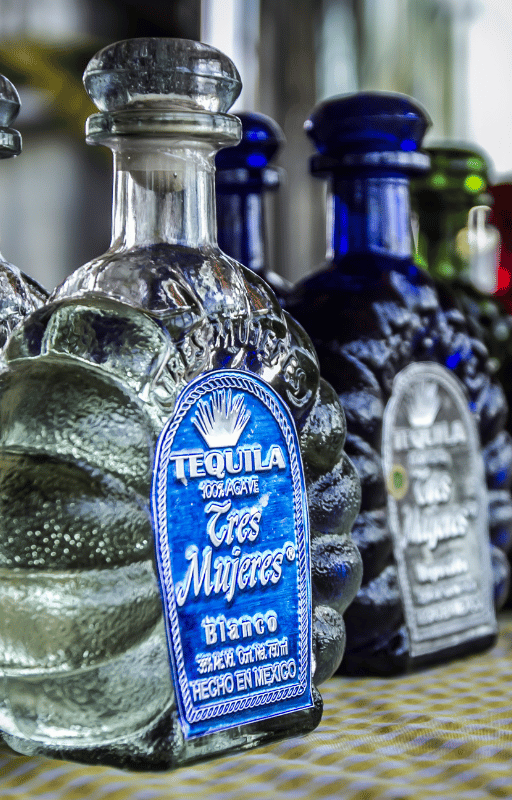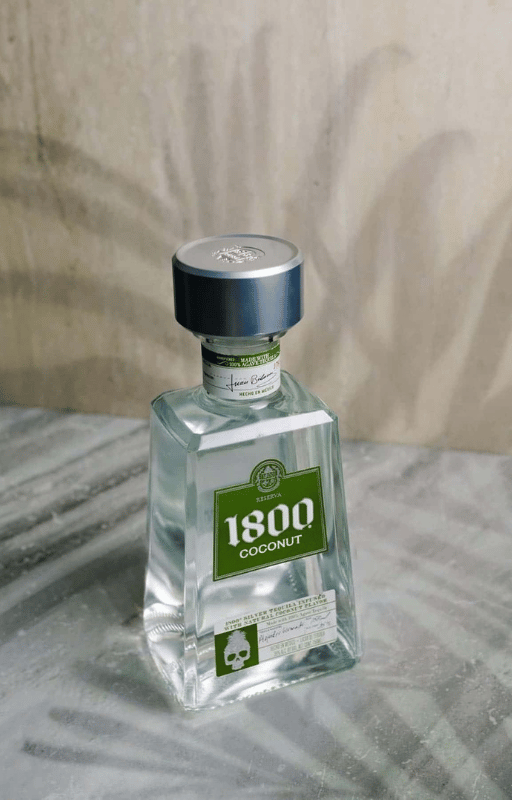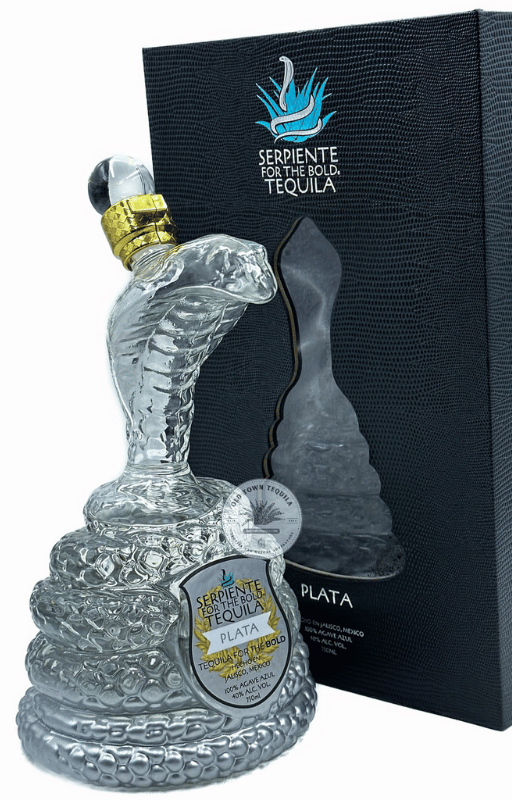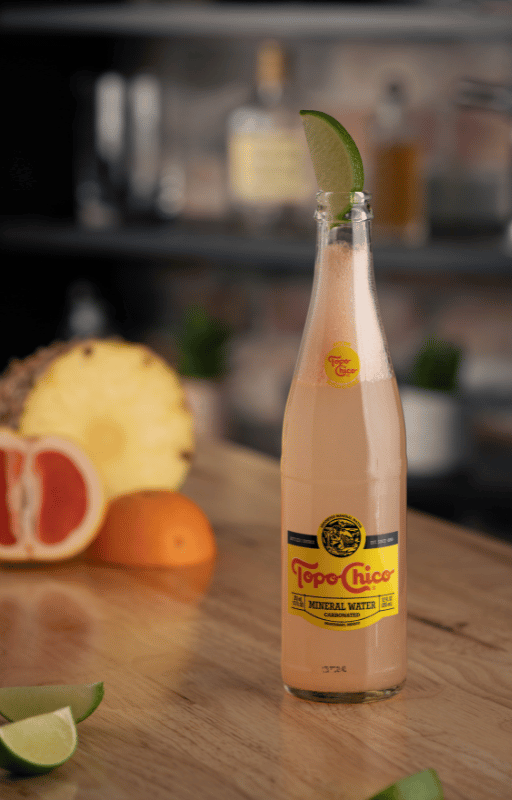Tequila 101
Tequila, a storied spirit with a rich history and vibrant cultural significance, has captivated the world with its unique flavor and undeniable allure. Hailing from the sun-soaked region of Jalisco, Mexico, this iconic libation has experienced a renaissance in recent years, as connoisseurs and enthusiasts alike seek to uncover the depths of its complexity. In this article, we dive into the fascinating world of tequila, exploring its origins, production process, and the different types that make it a favorite among spirits aficionados.
The Origins of Tequila
Tequila's story begins with the Aztecs, who fermented the sap of the agave plant to create a primitive alcoholic beverage called 'pulque.' When the Spanish conquistadors arrived in the 16th century, they brought the art of distillation with them, leading to the creation of a distilled agave spirit known as 'mezcal.' The town of Tequila, nestled in the state of Jalisco, soon became the epicenter of mezcal production, eventually lending its name to the spirit we know and love today.
The Agave Plant: The Heart of Tequila
Tequila's unique taste and character are derived from the blue agave plant (Agave tequilana Weber), a succulent native to Mexico's arid highlands. The blue agave's distinct properties and terroir play a crucial role in the final flavor profile of the spirit. To create tequila, the heart of the agave plant, known as the 'piña,' is harvested, roasted, and then crushed to extract its sweet juices.
The Production Process: Crafting the Spirit
Tequila production involves several key steps:
- Harvesting: Jimadores, skilled agave harvesters, carefully select mature blue agave plants, strip away their leaves, and remove the piñas. This labor-intensive process is typically done by hand, ensuring the preservation of agave's unique qualities.
- Cooking: The piñas are then baked in traditional stone ovens or modern stainless-steel autoclaves, converting the agave's complex carbohydrates into simple sugars.
- Extraction: The cooked piñas are crushed to release their sweet juices, which are then fermented in tanks to create a low-alcohol 'mosto.'
- Distillation: The mosto undergoes a two-step distillation process, first producing 'ordinario' and then transforming it into 'tequila.' Some premium tequilas are distilled a third time for added purity and smoothness.
- Aging: Depending on the type of tequila, the spirit may be aged in wooden barrels to develop its color, flavor, and aroma.

The Different Types of Tequila
Tequila is classified into several categories based on aging and production methods:
- Blanco (Silver): This clear, unaged tequila is bottled immediately after distillation, preserving the purest expression of agave's flavor. Blanco tequilas are ideal for cocktails and mixed drinks.
- Reposado (Rested): Aged for a minimum of two months but less than a year in oak barrels, reposado tequilas develop a light golden hue and a more nuanced flavor profile, with hints of caramel and vanilla.
- Añejo (Aged): Aged for a minimum of one year but less than three years in oak barrels, añejo tequilas boast a darker color and a richer, more complex taste, with notes of chocolate, dried fruits, and spices.
- Extra Añejo (Extra Aged): Aged for a minimum of three years in oak barrels, extra añejo tequilas are the pinnacle of the aging process, featuring a deep amber color and a sophisticated, velvety flavor profile, with hints of toasted oak, tobacco, and dark chocolate
The Colorful World of 8 Flavored Tequilas
As a tequila mixologist expert, I've had the opportunity to explore the fascinating world of tequila and its myriad of flavors. Flavored tequilas have experienced a surge in popularity recently, expanding the traditional boundaries of tequila and offering a creative playground for mixologists and enthusiasts alike.
Lime Tequila
Lime tequila infuses the spirit with the tangy and zesty flavors of fresh lime, making it a perfect choice for citrus-based cocktails like the classic margarita or the refreshing Paloma. Lime tequila adds an extra layer of citrus complexity that can elevate any tequila-based drink.
Grapefruit Tequila
Grapefruit tequila combines the bittersweet notes of grapefruit with the agave base of tequila. This refreshing and invigorating flavor profile lends itself well to tropical cocktails, such as a grapefruit tequila sunrise, or it can be enjoyed simply mixed with soda water for a bright and effervescent sip.
Pineapple Tequila
Pineapple tequila merges the rich, tropical sweetness of pineapple with the earthy undertones of tequila. Ideal for Tiki-inspired drinks or a pineapple-infused margarita, pineapple tequila provides a delightful twist to traditional tequila-based cocktails.
Jalapeño Tequila
Jalapeño tequila brings the heat with its fiery infusion of jalapeño peppers. This spiced-up version of tequila is perfect for those who crave a bit of heat in their cocktails, such as in a spicy margarita or a Mexican mule with a kick.
Coffee Tequila
Coffee tequila marries the bold, roasted flavors of coffee with the robust character of tequila. It is a versatile choice for coffee-based cocktails or as a unique twist in dessert recipes, such as a coffee tequila tiramisu or an espresso martini with a Mexican touch.
Cucumber Tequila
Cucumber tequila offers a crisp, cooling infusion of fresh cucumber, creating a refreshing and light flavor profile. Perfect for sipping on a hot summer day, cucumber tequila pairs well with mint, lime, and soda water for a revitalizing cocktail experience.
Chocolate Tequila
Chocolate tequila blends the rich, indulgent taste of chocolate with the distinct flavors of tequila, making it a delightful choice for dessert cocktails, such as a chocolate tequila martini or a chocolate-infused Mexican hot chocolate.

Sammy's Favorite Tequila Flavor: Coconut
Among the many tequilas I've encountered, one stands out in particular for its exotic twist and versatility: coconut tequila. This alluring spirit embodies the essence of tropical paradise, blending the robust character of traditional tequila with the smooth, creamy sweetness of coconut.
Coconut tequila
is a flavored tequila, crafted by infusing high-quality tequila with natural coconut flavoring. The result is a spirit that harmoniously marries the bold, earthy notes of agave with the delicate, sweet nuances of coconut. This unconventional pairing lends itself to an impressive versatility, making coconut tequila an ideal ingredient for crafting refreshing cocktails or sipping on its own.
Among the various coconut tequila brands, 1800 Coconut Tequila stands tall as a premium choice for connoisseurs and casual drinkers alike. This luxurious spirit is made by infusing 1800 Silver Tequila, a smooth and refined tequila produced from 100% blue Weber agave, with natural coconut flavor. The result is a perfectly balanced and irresistible fusion of flavors.
On the nose, 1800 Coconut Tequila greets you with a subtle yet captivating aroma of fresh coconut, accompanied by hints of agave and a touch of vanilla. Upon tasting, the rich, velvety texture envelops your palate, delivering an initial burst of sweet, creamy coconut, which gradually gives way to the earthy, peppery notes of agave. The finish is long, smooth, and delightfully refreshing, leaving you with a lingering taste of tropical paradise.
The versatility of 1800 Coconut Tequila is one of its most appealing qualities. It shines in a wide range of cocktails, from classic margaritas with a tropical twist to creative concoctions like the Coco Piña, which combines coconut tequila, pineapple juice, and a splash of lime. Alternatively, you can enjoy this exotic spirit on the rocks or neat, allowing its complex flavors to shine through in their purest form.
The Health Facts of Tequila
Tequila, the iconic Mexican spirit, has long been associated with parties, shots, and wild nights. However, as a tequila mixologist expert, I am here to unveil the lesser-known aspects of this fascinating beverage. From its gluten-free status to the caloric content of a shot and its stimulating properties, let's dive into the world of tequila and uncover its hidden health facts.
Is Tequila Gluten-Free?
Tequila is derived from the blue agave plant, which is native to the Jalisco region of Mexico. This alcoholic beverage is made by fermenting and distilling the sugary juice of the agave's core, known as the "piña." Since it does not contain grains like wheat, barley, or rye, tequila is naturally gluten-free. This makes it an ideal choice for individuals with celiac disease or gluten sensitivity who want to enjoy a spirited drink without worry.
However, it's crucial to note that not all tequilas are created equal. To ensure your tequila is genuinely gluten-free, look for bottles labeled as "100% Agave." This means it has been made solely from blue agave without any additives or other grain-based alcohols. Lower-quality tequilas, known as "mixtos," may contain added grain alcohols and are best avoided by those following a gluten-free lifestyle.
Calories in a Shot of Tequila:
The caloric content of a shot of tequila may come as a pleasant surprise. A standard shot (1.5 ounces or 44 milliliters) of tequila contains approximately 96 to 104 calories, depending on the brand and proof. This makes it one of the lowest-calorie alcoholic beverages available.
Tequila's relatively low calorie count is due to its simple, unadulterated nature. When you consume a shot of 100% agave tequila, you're primarily ingesting the fermented sugars from the agave plant. Keep in mind that the calorie count can increase significantly when you mix tequila with sugary ingredients for cocktails like margaritas. Opting for simpler mixers like club soda or fresh lime juice can help keep your tequila-based drinks lower in calories.
Is Tequila a Stimulant?
While tequila might be associated with a burst of energy on the dance floor, it is not a stimulant. Tequila, like all alcoholic beverages, is classified as a depressant. This means it slows down the central nervous system and can lead to feelings of relaxation and drowsiness.
The misconception that tequila is a stimulant may arise from its unique properties compared to other types of alcohol. Some individuals find that tequila provides a cleaner, more energetic buzz compared to other alcoholic drinks. This may be due to the fact that 100% agave tequila has fewer congeners (byproducts of fermentation), which can contribute to hangovers and sluggishness.
Tequila <$50
Tequila $50-$75
Tequila $75-$100
Tequila $100-$150
Tequila $150+

Tequila Bottle Design
The intricate designs of tequila bottles weave a tale of history, culture, and tradition, as enthralling as the concoctions we create. In this article, we'll delve into the mesmerizing realm of tequila bottle design, tracing its historical lineage, investigating chromatic schemes, and unraveling the enigma behind the intriguing serpent-shaped vessels.
Historical Lineage of Tequila Bottle Design
The tale of tequila, that divine spirit born from the blue agave plant, harkens back to the 16th century. In those bygone days, humble clay pots and mundane glass receptacles served as vessels for storage and transport. As the production and adoration of tequila burgeoned, so too did the artistry of its packaging.
The 19th century witnessed a renaissance in tequila bottle design, with artisans transmuting mundane containers into intricate masterpieces of ceramic, pewter, and hand-blown glass. These vessels transcended mere functionality, evolving into exquisite symbols of Mexican pride and craftsmanship.
Color Schemes in Tequila Bottle Design
The color schemes used in tequila bottle designs often reflect the vibrant and lively Mexican culture. Bright colors such as red, green, and blue are common, symbolizing the Mexican flag and the lush landscape of the country. Some bottles feature hand-painted designs or intricate patterns, while others have simpler color schemes that focus on the purity and elegance of the tequila within.
Amber and gold hues are also popular in tequila bottle designs, as they evoke the rich and golden color of aged tequila. These colors are often used in bottles containing reposado or añejo tequila, which have been aged in oak barrels for a certain period. The use of these warm colors emphasizes the complex and mature flavors of the spirit.
The Snake-shaped Tequila Bottle
The pièce de résistance of tequila bottle design is undoubtedly the enigmatic snake-shaped vessel. This sinuous creature holds a place of prominence within the annals of Mexican culture and mythology, embodying the duality of life and death, and symbolizing transformation and renewal. The ancient Aztecs revered the snake as an emblem of wisdom and regeneration, with the deity Quetzalcoatl, the plumed serpent, reigning supreme within their pantheon of gods.
By incorporating the serpentine form into tequila bottle design, artisans pay homage to this ancient symbolism and honor the rich cultural tapestry of Mexico. These hand-blown glass bottles, crafted with meticulous attention to detail, may feature realistic or abstract renditions of the snake. The ingenuity and skill required to create such vessels are a testament to the prowess of Mexican artisans.
A Sip of Success: The Business Side of Tequila
The global tequila market has experienced a significant surge in recent years, with sales reaching new heights and celebrities like Kevin Hart and George Clooney cashing in on the spirit's popularity. The business side of tequila is a fascinating case study of how celebrities, branding, and marketing strategies can impact a product's success.
Tequila's Growing Popularity
Tequila, a distilled spirit made from the blue agave plant, has evolved from its traditional roots in Mexico to become a trendy beverage enjoyed by connoisseurs worldwide. The global tequila market has been on an upward trajectory, with consumers seeking high-quality, premium tequila options. The rise in demand for craft spirits and a shift in consumer preferences towards artisanal products have contributed to tequila's increasing popularity.
Kevin Hart: Laughing All the Way to the Bank with Gran Coramino
In 2021, comedian and actor Kevin Hart announced the launch of his own tequila brand, 'Gran Coramino,' in partnership with Amber Beverage Group. Hart's decision to enter the tequila business stemmed from his passion for the spirit and his desire to create a premium product that would stand out in the market. Gran Coramino debut offerings included a Blanco, Reposado, and Añejo tequila, each designed to cater to different consumer preferences.
Hart's vast social media following and extensive promotional efforts have played a significant role in the brand's success. Hart has leveraged his comedic talents to create engaging content and relatable experiences around HartBeat, making it more than just a tequila brand. The result has been a strong consumer connection, boosting sales and increasing the brand's visibility in a competitive market.
George Clooney: Making Waves with 'Casamigos'
In 2013, Hollywood actor George Clooney, along with Rande Gerber and Mike Meldman, co-founded 'Casamigos,' a premium tequila brand named after Clooney's and Gerber's Mexican vacation homes. The trio's intention was to create a tequila that they could enjoy with their friends and family, but it quickly grew into a full-fledged business venture.
The founders' star power, combined with a strong focus on quality and taste, helped Casamigos gain traction in the market. In 2017, Diageo, one of the world's largest spirits companies, acquired Casamigos for a staggering $1 billion. The acquisition validated the brand's success and highlighted the impact that celebrity involvement can have on a product's value.
The Business Side of Celebrity-Endorsed Tequila
The success of both Gran Coramino and Casamigos demonstrates how the power of celebrity can propel a product to the forefront of the market. Celebrities like Hart and Clooney can leverage their fame, influence, and personal connections to create awareness and generate interest in their products. In turn, this can drive demand and help the brand establish a strong market presence.
However, it's not just about the celebrity factor. Both Gran Coramino and Casamigos have placed a strong emphasis on the quality of their products, ensuring that they can stand on their own merits. This focus on craftsmanship has been key to their success, as consumers are increasingly drawn to premium, artisanal spirits.






























